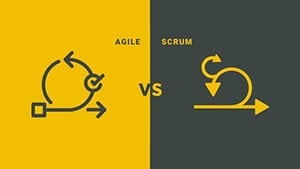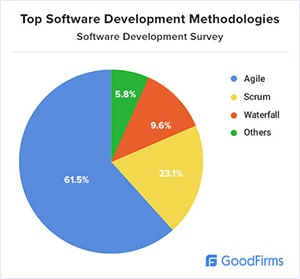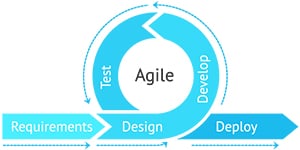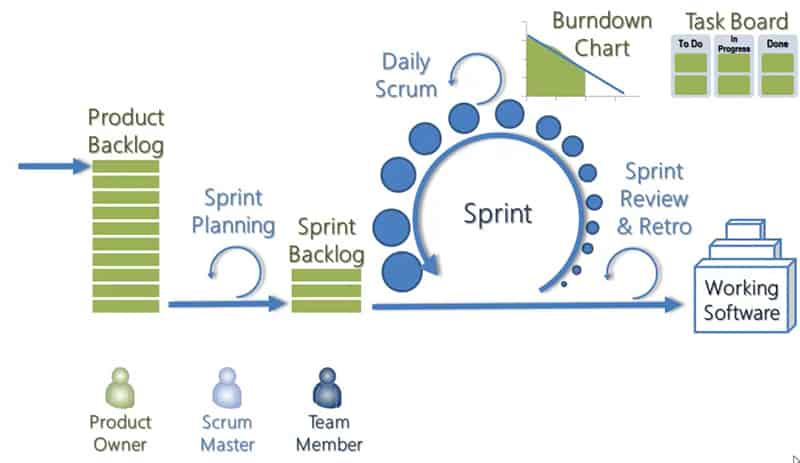Click here to get this post in PDF
While conducting a software development procedure, you have to make hundreds of decisions to build it flawlessly like;
And to accomplish the envisioned product, first, you’ve to pick one of the best project management methodologies to develop.

From Agile to Scrum to DevOps to Waterfall to Kanban, there are a plethora of different project management frameworks. And the more number of options means the more probability of you being into a big dilemma to select the apt for our project.
- Estimating the scope of the project
- Success criteria
- Profitable locations
- Risk factors
- Beneficial resources, etc.
The best methodologies to choose from includes,
- Rapid Application Development Methodology
- Scrum Development Methodology
- Lean Methodology
- Agile Software Development Methodology
- Spiral Model
- Waterfall Model
- Prototype Model
- Iterative Model
And each of them is well-suited as per the requirement of the projects. However, two of the most approved approaches to software development are Agile and Scrum because of these reasons:
- Both of them provide transparency between the clients and developers, which leads them iteration planning and giving the inputs for the new features.
- Agile and Scrum allows the clients to determine the priority of the features and the importance of it for the consumers that increase the business value.
- Diving the project in multiple sprints gives the project high-quality notch compared to other models.
Also, the survey of GoodFirms confirms that around 61.5 % and 5.8% of project managers pick these two over other frameworks.
Now, when we’ve narrowed down to the two best among multiple options, it’s time to choose the most accurate model for your project-in-the-midst-of these two.
This blog post will assist you in picking between Agile and Scrum with the sides of their pros and cons, so let’s hop up for the best ride of Agile and Scrum development methodologies.
Importance of Software development methodologies in project management:
The world of project management is full of heavy terminology and complicated procedures that might make inexpert feel daunting.
Also, project managers perform various roles and fulfill their responsibilities for creating an efficient project plan and all the other significant necessities of the projects they work on with teams.
Their foremost task is to identify and handle risks to the projects. Also, keeping the project in its constraints falls under their watch.
Though, before we take a deep dive into this subject, first, we have to pick our best software development methodology to oversee the efforts and use techniques to accomplish successful projects.
Let’s take the next leap into the introduction of Scrum and Agile development methodologies along with their different pros and cons, which will encourage you to determine the right approach for the project.
What is Agile software development?
Agile software development is based on these two beliefs:
a) An incremental
b) Iterative approach
Agile is not a big fan of depth planning at the start of the project; it lets open the gate for you to make the required changes with time following the constant feedback and inputs of the end-user.
Also, cross-functional teams operate iterations of a product, and this task is assigned in a backorder, which is prioritized as per the value of customer and business.
In Agile methodologies, during the development process, you have to build strong face-to-face communication with clients and teammates, which encourages teamwork and accountability.
The stakeholders and developers of your enterprise must work together by syncing the needs of the customer for product and company goals.
Pros of Agile:
- The agile approach enables delivery in a short span. That eventually makes the experts more receptive to the development demands of the clients and deliver the project quickly.
- With Agile development, you can ask for necessary changes whenever quality issues are there, as a regular inspection of the project done by the superior at every iteration throughout the lifecycle.
- With smaller planning cycles, the task of accommodating the changes at any time becomes simple.
- The small iteration provides an opportunity to improve and reprioritize the backlog as the team makes the changes to the project during the development.
- Agile projects regularly get feedback and necessary input from users and team members throughout the project, so the final product will be an improved and enhanced version compared to the starting idea.
Cons of Agile:
- Agile lets teams get easily off-track because of not enough documentation or having a clear vision of outcome at the start.
- Compared to other development methodologies, Agile is high-maintenance and expensive.
- The ability to keep less experienced developers and team members in the line; it often misleads them. That eventually leads to the downfall of long-term projects.
- Agile does not have much focus on prior designing and documentation for the project.
What is Scrum software development?
Scrum framework is the second well-known among project managers for developing the project. Scrum has unique characters like:
a) Fixed iteration
b) Role-based tracking
As we mentioned, Scrum follows an assortment of fixed iterations to develop a product speedily. All of these iterations are known as Sprint in the Custom software development company. And, each sprint defines their time limit within 15 days to 1 month.
The starting of each sprint occurs during the Sprint planning meeting, where the experts supply details for that sprint. Also, in this phase, the estimation of the sprint gets declared as per these mentioned factors:
- The choice of a product backlog for the particular Sprint
- Discussion over the expanse and completion targets with team members
- As per the requirement, the backlog items can split
- During this phase, the preferences get modify on the backlog items
Pros of Scrum:
- Scrum framework is the best option to make better utilization of time, resources, and efficient projects.
- Working with small sprints makes the task of catching the issues quite simple for the developers; also, it becomes easy to rectify the bugs before the release of the product.
- With the constant feedback, the task of making the changes as per the demand of clients becomes apparent in Scrum methodology.
- Scrum is one of the most efficient methodologies from the client’s perspective. Because of the daily meetings, the clients stay in the loop with the on-going work.
- The adaptivity into the Scrum framework is much better than others as it comprises feedback with retrospective opinions through each sprint.
Cons of Scrum:
- The Scrum Master has to make sure and enforce all meetings on the developers. And the possibility of developers shunning these many meetings is higher.
- The role of Scrum Master is most important in Scrum. If they neglect their duty and responsibility, that certainly leads to the downfall of the project.
- Scrum does not define a certain finishing time or give a deadline to the clients, which makes you expand several sprints over one project.
- Scrum is an ideal choice for 3-9 team members, more than 9 members can affect the efficiency of this development model.
Let’s pick:
It’s time for us to pick the best between these two. Agile and Scrum are birds of the same feather flock providing an impeccable experience to their clients in the software development cycle.
However, to select one between these two, you need to weigh your requirements, such as the type of project, funds, time, necessary services, and workability with the pros and cons of theirs.
I hope that this ride leads you to the ideal software development methodologies as per your project elements.
You may also like: The Most Popular Software Development Trends in 2020




